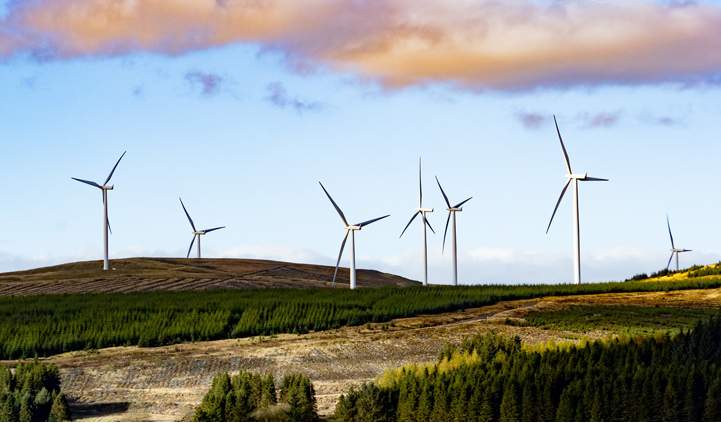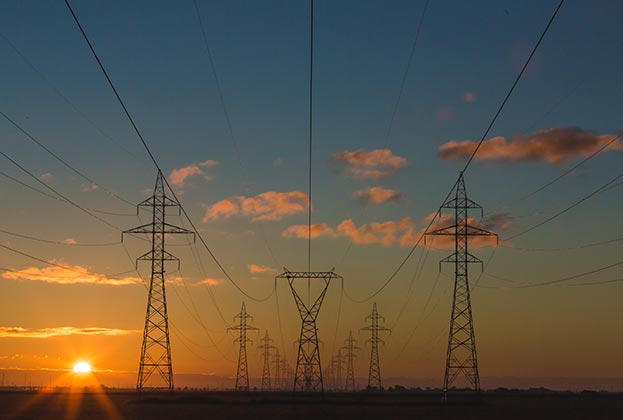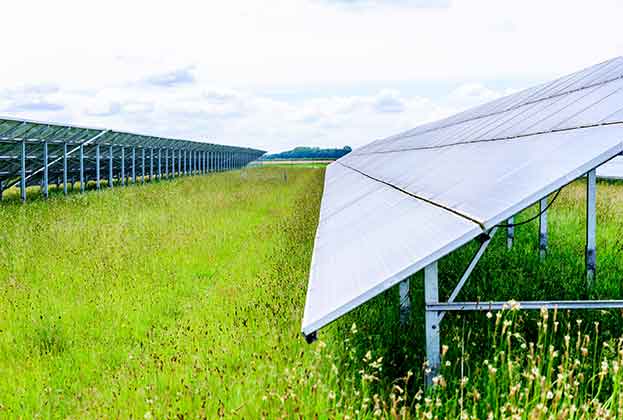Investment in the national electricity infrastructure can preserve the renewable energy planning pipeline, which is on track to hit net zero targets
Solving the energy trilemma
The UK is on track to achieve net zero electricity by 2050 but a struggling electricity network will hamper progress if prompt action is not taken
Current UK energy policy has long been apathetic to many renewable energy sources. Onshore wind currently suffers from an effective ban on development in England and support for solar photovoltaics (PVs) continues to be withdrawn. The recently released Growth Plan promises to bring “onshore wind planning policy in line with other infrastructure to allow it to be deployed more easily in England”, however, the summer Conservative leadership campaign openly criticised field-scale solar PV. Former Prime Minister Liz Truss has previously called these solar farms “a blight on the landscape” and removed subsidies when environment secretary in 2014.
Energy supply must fulfil the ‘energy trilemma’: security, affordability and sustainability. As renewables are deployed more widely, they are increasingly seen as able to fulfil all three of these requirements
Andrew Teanby, Associate Director, Rural Research
Yet the lack of government support is a moot point as public drive supersedes that of policymakers – 38 GW of renewable energy generation capacity already exists across the UK, provided by solar and wind (both on and offshore). Close to the same amount again (33 GW) is either under construction or awaiting construction, having received planning permission, with another 15 GW contained within planning applications awaiting a determination. Almost 16 GW of battery energy storage is present within the planning pipeline to support the greening of the UK’s electricity supply, as well as providing grid balancing services.
The reasons for this enthusiasm are stark. Energy supply must fulfil the 'energy trilemma”: security, affordability and sustainability. As renewables are deployed more widely, they are increasingly seen as able to fulfil all three of these requirements. In contrast, the crises that have occurred across the globe since the start of the decade have shown fossil fuels to be wanting in all instances.
Multiple net zero pathways have placed significant weight on renewable technologies, such as the Future Energy Scenarios (FES) created by National Grid. Research by Savills shows that the UK is potentially on track to hit the renewable energy waypoints and targets set under the FES. By bringing projects in the planning pipeline to fruition (those that are under construction, awaiting construction or have applied for planning permission), the UK has the potential to hit targets in batteries, onshore wind and solar PV without any further additions to the current pipeline.
Gridlock
However, despite a promising collection of projects, the inadequate status of the national electricity infrastructure is already seeing developers face as much as a 14-year wait to connect new generation capacity to the grid. Such delays mean all but the very largest projects are likely to see investor confidence shaken as backers look to secure nearer-term returns for their clients.
It is entirely possible that, in addition to failing to reach 2050 targets, we may see the existing pipeline of projects fall away. Planning consent on most projects is also temporary, meaning in some cases that consent may well expire. This potential for mass exodus is doubly concerning when the FES predict the total capacity of UK generation increasing by at least 129% on 2021 levels by 2050 in order to meet future demand.
Extreme weather events regularly expose weaknesses in the UK electricity grid. Most recently, heatwaves revealed flaws in the design and construction of the supporting infrastructure. As the temperature of the conducting cable increases, so does resistance. High ambient air temperature slows heat dissipation, meaning resistance increases too. Winter poses other challenges. Storm Eunice caused what was believed to be a record national power outage, with 1.4 million homes being affected.
Impact on property development
Weaknesses within the infrastructure are having a perceivable effect on reliant sectors, such as property. West London is facing a shortage of grid capacity that could soon compromise its ability to support new homes. Blame is placed on an influx of requests for new electricity connections throughout the boroughs of Ealing, Hillingdon and Hounslow from data centre operators who have sought to co-locate adjacent to fibre optic cables. No planned housing schemes have currently been affected and Hillingdon council claims there is evidence that power capacity has been reserved for developments that may never take place, freeing capacity for future developments.
Power and energy has previously been a secondary consideration when considering new developments. The current status of the grid means that power now needs to be among the first considerations in order to ensure success and progress. It is therefore beholden upon developers to communicate with transmission and distribution operators early in the process to achieve this.
WHAT ARE THE FUTURE ENERGY SCENARIOS?
The FES presented by National Grid are three scenarios that would each deliver net zero by 2050, though each with different approaches.
- Consumer transformation
Net zero is achieved by 2050 with a reliance on greater consumer engagement. The electrification of heating means this scenario has high peak electricity demands.
- System transformation
Significant supply side changes achieve net zero by 2050. There is less disruption to the way consumers heat their homes, with a high demand on hydrogen.
- Leading the way
The fastest decarbonisation pathway, reaching net zero by 2047 and going on to achieve a carbon-negative scenario by 2050. Reliant on investment in decarbonisation technologies.

Three steps to creating grid capacity
Government and industry can take action to mitigate the risks
Although upgrades to the electricity network are coming in the long term to support renewables deployment, the risk to investors, net zero targets, and reliant sectors stands to be realised in the near term if action is not taken. Both government and industry are adapting policy and practice accordingly to mitigate this short-term risk.
Below are three steps to create more capacity:
- Storage support
As subsidy has been withdrawn and the technology matured, the proportion of sites utilising energy storage has increased markedly. In 2014, no solar PV or onshore wind projects possessed co-located storage. By 2021, this proportion increased to a quarter of all ground-mounted solar PV and onshore wind projects equal to, or greater than, 1 MW. Energy storage is not explicitly a requirement for renewable energy but it is an enabler and as the ambition of carbon reduction increases, so too does the system benefit offered by energy storage. - Maximising existing capacity
Smart control strategies hold the key to liberating existing capacity within the grid and have already been proven within the UK. The Orkney Isles are home to one of the most energy-rich climates in the world and have successfully captured vast volumes of energy through innovative technologies, making the islands a net exporter of power but fundamentally overloading the local grid. By pioneering active network management in 2009, 22 MW of capacity was created. In early 2021, National Grid installed 48 SmartValves across northern England, creating 1.5 GW of extra network capacity. These valves balance power flows on transmission lines and can push power off overloaded lines or pull power onto under-used lines. There are now plans to scale up this trial to create a further 500 MW of additional capacity using the existing network. - Overhauling electricity markets
The most comprehensive government action to date is the Review of Electricity Market Arrangements (REMA), published in July 2022. This consultation seeks to provide solutions on the delivery of new infrastructure, the cost of stabilising an increasingly volatile system, and resolving the energy price crisis. Several mechanisms have been suggested to use pricing to drive investment, such as Locational Marginal Pricing. This replaces the national wholesale price with local or zonal prices, where the physical constraints of the network are reflected in the wholesale electricity price, acting to direct investment where it’s needed. REMA is likely to take several years to come to fruition itself, as the Electricity Market Reform process before it did, and the exact fleet of solutions that will be adopted is unclear.
Read the articles within this publication below




